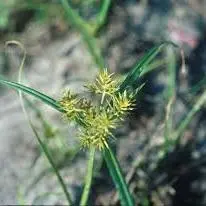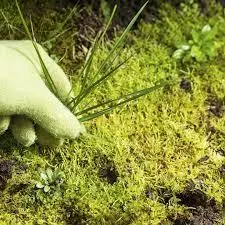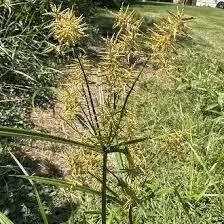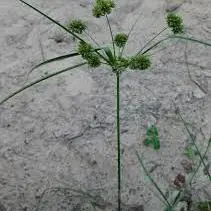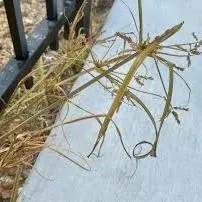Will 2,4-D Kill Nutsedge?
Nutsedge (Cyperus spp.) is a persistent and aggressive weed commonly found in lawns, gardens, pastures, and crop fields. It is often mistaken for grass but belongs to the sedge family, making it harder to control with standard herbicides.
2,4-D (2,4-Dichlorophenoxyacetic acid) is a selective herbicide designed primarily to kill broadleaf weeds while leaving most grasses unharmed. However, many growers and homeowners wonder whether 2,4-D can effectively eliminate nutsedge.
This article explores whether 2,4-D kills nutsedge, alternative herbicides for better control, and best practices for effective nutsedge management.
Does 2,4-D Kill Nutsedge?
Effectiveness of 2,4-D on Nutsedge
✔ Limited Effect – 2,4-D is NOT highly effective against nutsedge because nutsedge is not a broadleaf weed but a sedge.
✔ May Suppress Growth – In some cases, 2,4-D can weaken young nutsedge, but it rarely eliminates the tubers (nutlets), allowing regrowth.
✖ Does Not Kill the Root System – Nutsedge spreads via underground tubers, and 2,4-D does not reach these tubers effectively, leading to regrowth within weeks.
✖ Not a Recommended Treatment – For reliable nutsedge control, a different herbicide is needed.
When Might 2,4-D Have Some Impact?
- Young Nutsedge Plants: If applied early in the season, 2,4-D may stunt growth but won’t provide long-term control.
- Mixed Weed Infestations: If nutsedge is growing alongside broadleaf weeds, 2,4-D can help reduce other weeds, making nutsedge easier to manage with targeted treatments.
Best Herbicides for Nutsedge Control
Since 2,4-D does not effectively kill nutsedge, consider using alternative herbicides that specifically target sedge weeds.
Selective Herbicides for Nutsedge Control
These herbicides target nutsedge while leaving grass unharmed, making them ideal for lawns, pastures, and fields.
-
Halosulfuron-methyl
- One of the most effective selective herbicides for yellow and purple nutsedge.
- Kills the tubers, preventing regrowth.
- Safe for turfgrass, pastures, and crops.
-
Sulfentrazone
- Provides faster control than Halosulfuron.
- Works by disrupting cell membranes in nutsedge.
- Effective for both yellow and purple nutsedge.
-
- Works well on actively growing nutsedge.
- Often used in crop fields and turfgrass areas.
- Post-emergent control only (does not prevent new growth).
Non-Selective Herbicides for Nutsedge Control
If you need complete elimination, including all vegetation, use a non-selective herbicide like:
✔ Glyphosate – Kills all plants, including nutsedge, but may require multiple applications to prevent regrowth.
✔ Imazapyr – Long-lasting total vegetation control, best for non-crop areas.
✖ Caution: Non-selective herbicides will kill desirable plants and grass as well, so use them only in areas where total vegetation removal is acceptable.
Best Practices for Nutsedge Control
To completely eliminate nutsedge, follow these steps:
✔ Apply Herbicide at the Right Growth Stage – Treat actively growing nutsedge (early summer) when plants are not drought-stressed.
✔ Use a Selective Herbicide for Lawns – If treating nutsedge in turf, use Halosulfuron or Sulfentrazone to avoid damaging grass.
✔ Prevent Regrowth by Controlling Tubers – Nutsedge spreads underground, so use a herbicide that reaches the tubers.
✔ Avoid Overwatering – Nutsedge thrives in moist, poorly drained soil. Improving drainage reduces future infestations.
✔ Repeat Applications if Necessary – Some herbicides require a second treatment after a few weeks for full control.
Final Verdict: Will 2,4-D Kill Nutsedge?
- 2,4-D is NOT an effective solution for nutsedge control.
- It may temporarily suppress nutsedge growth, but it will not eliminate the tubers, leading to regrowth.
- For reliable nutsedge control, use Halosulfuron, Sulfentrazone, or Bentazon, which are designed to kill sedges.
- For total vegetation removal, a glyphosate-based herbicide may be needed.
By using the right herbicide and proper weed management techniques, you can successfully eliminate nutsedge and prevent future infestations.
Nutsedge (Cyperus spp.) is a persistent and aggressive weed commonly found in lawns, gardens, pastures, and crop fields. It is often mistaken for grass but belongs to the sedge family, making it harder to control with standard herbicides.
2,4-D (2,4-Dichlorophenoxyacetic acid) is a selective herbicide designed primarily to kill broadleaf weeds while leaving most grasses unharmed. However, many growers and homeowners wonder whether 2,4-D can effectively eliminate nutsedge.
This article explores whether 2,4-D kills nutsedge, alternative herbicides for better control, and best practices for effective nutsedge management.
Does 2,4-D Kill Nutsedge?
Effectiveness of 2,4-D on Nutsedge
✔ Limited Effect – 2,4-D is NOT highly effective against nutsedge because nutsedge is not a broadleaf weed but a sedge.
✔ May Suppress Growth – In some cases, 2,4-D can weaken young nutsedge, but it rarely eliminates the tubers (nutlets), allowing regrowth.
✖ Does Not Kill the Root System – Nutsedge spreads via underground tubers, and 2,4-D does not reach these tubers effectively, leading to regrowth within weeks.
✖ Not a Recommended Treatment – For reliable nutsedge control, a different herbicide is needed.
When Might 2,4-D Have Some Impact?
- Young Nutsedge Plants: If applied early in the season, 2,4-D may stunt growth but won’t provide long-term control.
- Mixed Weed Infestations: If nutsedge is growing alongside broadleaf weeds, 2,4-D can help reduce other weeds, making nutsedge easier to manage with targeted treatments.
Best Herbicides for Nutsedge Control
Since 2,4-D does not effectively kill nutsedge, consider using alternative herbicides that specifically target sedge weeds.
Selective Herbicides for Nutsedge Control
These herbicides target nutsedge while leaving grass unharmed, making them ideal for lawns, pastures, and fields.
-
Halosulfuron-methyl
- One of the most effective selective herbicides for yellow and purple nutsedge.
- Kills the tubers, preventing regrowth.
- Safe for turfgrass, pastures, and crops.
-
Sulfentrazone
- Provides faster control than Halosulfuron.
- Works by disrupting cell membranes in nutsedge.
- Effective for both yellow and purple nutsedge.
-
- Works well on actively growing nutsedge.
- Often used in crop fields and turfgrass areas.
- Post-emergent control only (does not prevent new growth).
Non-Selective Herbicides for Nutsedge Control
If you need complete elimination, including all vegetation, use a non-selective herbicide like:
✔ Glyphosate – Kills all plants, including nutsedge, but may require multiple applications to prevent regrowth.
✔ Imazapyr – Long-lasting total vegetation control, best for non-crop areas.
✖ Caution: Non-selective herbicides will kill desirable plants and grass as well, so use them only in areas where total vegetation removal is acceptable.
Best Practices for Nutsedge Control
To completely eliminate nutsedge, follow these steps:
✔ Apply Herbicide at the Right Growth Stage – Treat actively growing nutsedge (early summer) when plants are not drought-stressed.
✔ Use a Selective Herbicide for Lawns – If treating nutsedge in turf, use Halosulfuron or Sulfentrazone to avoid damaging grass.
✔ Prevent Regrowth by Controlling Tubers – Nutsedge spreads underground, so use a herbicide that reaches the tubers.
✔ Avoid Overwatering – Nutsedge thrives in moist, poorly drained soil. Improving drainage reduces future infestations.
✔ Repeat Applications if Necessary – Some herbicides require a second treatment after a few weeks for full control.
Final Verdict: Will 2,4-D Kill Nutsedge?
- 2,4-D is NOT an effective solution for nutsedge control.
- It may temporarily suppress nutsedge growth, but it will not eliminate the tubers, leading to regrowth.
- For reliable nutsedge control, use Halosulfuron, Sulfentrazone, or Bentazon, which are designed to kill sedges.
- For total vegetation removal, a glyphosate-based herbicide may be needed.
By using the right herbicide and proper weed management techniques, you can successfully eliminate nutsedge and prevent future infestations.

